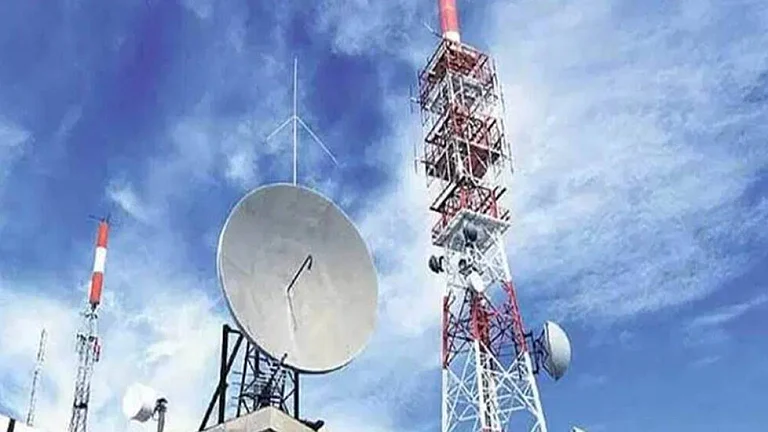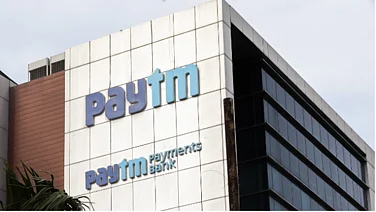Since 2018, a conflict has brewed between Indian telecom service providers [TSPs] under the purview of sectoral regulator TRAI [Telecom Regulatory Authority of India] and over-the-top (OTT) applications. The ongoing debate is a decade old and revolves around whether OTT services like WhatsApp, Netflix and Amazon Prime should pay TSPs a share of their revenue or face higher data charges for the data packets they consume to support video calls and streamed video content.
An easy resolution could be OTTs willing to share revenue with TSPs. Some examples can be found across geographies. For example, in Germany, Deutsche Telekom has agreements with various streaming services such as Netflix, in which a portion of the subscription fees is shared with the telecom operator. In Australia, Telstra partners with streaming services like Netflix, Stan and Kayo Sports under similar arrangements.
Recently, Canada imposed a 5% revenue share on non-Canadian OTT services, with the rationale that it is for a fund to promote local streaming content producers. A regulatory mechanism to make OTTs share revenue impacts the promise of "net neutrality", yet lack of such a mechanism starves telcos of the profitability that can attract investments. Is there a middle ground among these choices?
The Telco-OTT clash
The latest iteration of the TRAI-OTT dispute goes back to July 2023, when TRAI released a consultation paper addressing regulatory mechanisms for OTT communication services and proposing the selective banning of OTTs. In the past few months, TSPs, through their industry association, Cellular Operators Association of India (COAI), had advocated for a fair share data network usage policy to compensate for their investment in telecom infrastructure. COAI—whose members are Jio, Airtel and the merged Vodafone-Idea—demanded that internet calling and messaging apps comply with the same rules as them because of national security concerns. The slogan was "same service, same rules". In October 2023, the Telecom Disputes Settlement and Appellate Tribunal (TDSAT)—a body that handles appeals against TRAI rulings—passed a verdict that OTT platforms such as Netflix were outside TRAI's jurisdiction and instead, governed by IT Rules, 2021. It rejected a plea from a cable TV operators' collective to regulate free streaming of the ICC Cricket World Cup 2023 matches on Internet apps.
The union IT minister, too, has clarified publicly that OTT is not covered under TRAI's home legislation, the Telecommunications Act, 2023. Last month, industry associations and tech companies, including their collectives Nasscom and Broadband India Forum (BIF) joined issue to oppose COAI's renewed proposal to bring OTT communication apps under a licensing framework, arguing it would lead to a fragmented internet ecosystem and higher consumer costs.
The app developers' collective, IAMAI, has maintained that TSPs "operate on the network side, while OTTs operate on the application layer", making them operationally and technically distinct. Telecom operators, however, argue that OTTs benefit disproportionately from their infrastructure without contributing to the costs of maintaining and upgrading these networks.
In response to that claim, IAMAI believes that OTT platforms contribute to, rather than exploit, TSPs' revenue streams since consumers do pay for data. Telcos asking OTTs to share revenue have been compared to power companies asking consumer durable makers for a share in revenue because their appliances consume electric power.
Net Neutrality and the Jio-Airtel duopoly
The larger backstory to this on-and-off telcos-OTT skirmish revolves around the principle of net neutrality, which is the broader democratic idea of keeping the internet free for expression. Net neutrality advocates for treating all internet traffic equally, without discrimination or preferential treatment based on either the content consumed, the user browsing or the platform hosting the content.
The advocates of the movement in India also scored a victory: getting TRAI in 2016 to formalise the principle of not throttling data access to a particular application or website. Therefore, if TSPs were now to be authorised to charge OTTs different rates or prioritise certain OTT traffic over others, it would violate net neutrality. This would create a tiered internet where some services are more accessible due to financial agreements with the TSPs rather than user preference or technical merit. Supporters of net neutrality among digital entrepreneurs also argue that allowing TSPs to charge OTTs could lead to "pay-to-play", shutting out start-ups. Only well-funded OTTs could afford to pay for preferential treatment by TSPs, stifling innovation and limiting consumer choice.
Adding to this is the near-duopoly in the Indian telecom sector, where Airtel and Jio have a combined revenue share of 83% while Vodafone-Idea is majority-owned by the central government since 2023 (the fourth operator, BSNL, is fully owned by the government). While coordinating positions to align with industry priorities is understandable, in a duopoly there are unlikely to be a diversity of positions to reconcile between market participants.
There have also been allegations against cartelisation within the industry: in just five years of strategic infrastructure-sharing cooperation between Airtel and Jio for the latter's rollout, Airtel was accused of cartelising to stymie Jio's offer on free voice calls. The current salvo against OTTs can thus also be viewed by apps wishing to enter the Indian digital market as a threat. In contrast, EU [European Union] markets have historically favoured a minimum of four telcos per country, with regulators being cautious on consolidation. Recent merger approvals in the EU still require the creation or maintenance of a fourth truly private operator, highlighting a different approach to market structure and competition. It has to be admitted that there are practical and financial concerns raised by TSPs about the investments needed to tide over network congestion and move towards profitability.
TSPs also pay a share of their adjusted gross revenue (AGR) as both licence fees and contributions to the Universal Service Obligation Fund (USOF), a fund for telecom infrastructure development in remote areas. OTTs sharing revenue with TSPs would help stabilise TSPs' financial position and attract more investment (for example, via an eventual IPO by Reliance Jio). Yet this can also be achieved through considered tweaks by the government to the licence fee regime, such as a policy allocating a fraction of USOF funds to for infrastructure in pockets where telcos claim to be battling network congestion.
The Cost of Managing Networks
TSPs contend that managing network congestion and ensuring quality of service requires traffic management, which violates strict interpretations of net neutrality. Massive data consumption when certain OTT apps are used by the consumer, particularly video streaming platforms, puts great strain on their networks. They claim this makes it necessary to charge for such congestion or manage it by reducing bandwidth allocation to consumers using OTT apps. Take for instance call drops—a persistent issue in India's telecom sector of phone calls being cut off mid-conversation for technical reasons. This problem has been a point of contention between consumers, TSPs and TRAI for years now.
TSPs argue that the proliferation of OTTs has contributed to the call drop problem. They also claim that the shift of voice traffic to OTT platforms has reduced voice revenues, limiting their ability to invest in network improvements to address call drops. Yet the estimate of call drops and call failures—the inability to place a call due to busy interconnection between two cellphone networks—is contradictory.
On one hand, a survey reveals that nine in 10 cellphone users claim to be affected, on the other, the chosen metrics maintained by TRAI peg the figure at no more than 2-3%. Net neutrality advocates also point out that data consumption is being charged, as average revenue per user (ARPU) has tripled from FY17 to FY25, indicating that telcos have the cashflow to address the investment needed for their networks, especially after the industry's consolidation. Further, to offset the voice revenue drop, there has been a business case for several years now where traditional voice and messaging services are sold to consumers in a pre-paid bundle along with a daily quota of data.
The way forward is innovation TSPs can take credit for innovative ideas to tackle call drops and call failures. Jio now carries 30% of data traffic on its 5G network, debottlenecking the 4G network. Additionally, TSPs are also making significant strides in managing their network costs more efficiently. For instance, the gap in network cost per tower between Jio and Airtel has been narrowing, with both companies reducing the cost by more than 10% in FY24 alone. This improvement in cost management suggests that TSPs may be better equipped to handle increased data traffic without necessarily resorting to practices that violate net neutrality principles. To extend the electricity utility analogy, it may be reasonable to allow TSPs to implement tiered pricing for data without discriminating against OTTs. For instance, TRAI could permit a 28 day plan offering 2GB per day in a way that if a day's usage exceeds 2GB by more than 50%, the plan's validity is reduced by one day.
TRAI could ensure that such data pricing aligns closely with publicly-communicated patterns of congestion in specific areas, similar to how electricity is billed on a peak hours versus lean hours model. OTTs are keenly aware that their users may be on data-deficient mobile plans, or that charges will ratchet up once the user is above a data threshold, thus many now optimise data usage to reduce strain on telecom networks. A cap on data usage within the app is also possible.
Video streaming services like Netflix and YouTube use adaptive bitrate streaming, which adjusts the video quality based on the user's internet speed to minimise data consumption. Telcos can also take heart, as dual SIM phones in India facilitate dual-homing, which allows a device to connect to more than one network simultaneously. Telcos can thus step in with a cheaper data plan to allow a consumer to switch between networks. The catch here is that, after clearance from TRAI, TSPs also provide bundled services to offer consumers greater value and generating additional revenue streams for themselves.
Both Airtel and Jio have attempted to create their own OTT content libraries. While this move could be to position themselves to compete with established OTT apps, it may also appear as a push for regulatory changes that treats OTTs adversely. Regulation must err on the side of innovation, an overall high level of investments and an impetus towards a multiplicity of businesses. Mobile internet use that relies on 5G; for instance, in online gaming, communications, e-commerce, digital payments and online learning, needs newer OTTs that are complementors on the telcos' platform. These problems of adoption are unlikely to be solved by more progress in telcos' technology. Telcos' need for assured revenue streams could very well avoid antagonising complementor OTTs.
(Views expressed here are personal. Mohammed Shahid Abdulla is faculty member at IIM Kozhikode. Manoshij Banerjee is an independent consultant on digital culture and workplace)



























